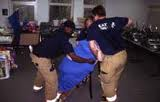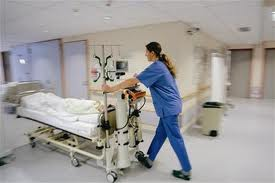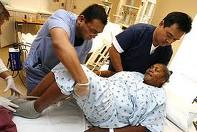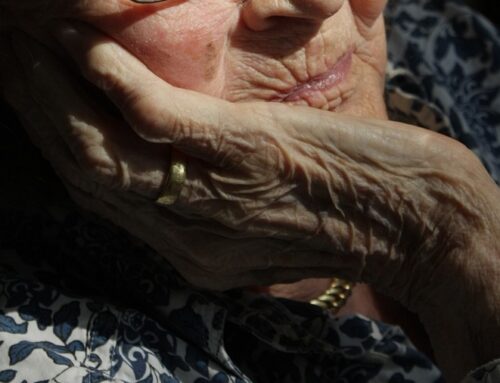Hospital and nursing home workers experience accidental muscle injuries at a rate that exceeds workers in construction, mining, and other work place occupations. NIOSH(A) was created by the Occupational Safety and Health Act to look for ways to prevent injuries in the work place because many of these injuries have resulted in permanent damage. The Agency for Health care Research and Quality funds studies on the effectiveness of injury treatment methods for lifting related injuries. These injuries are due in part to the manual patient handling activities which often involve lifting, associated with transferring and repositioning patients. This is further compounded by the obesity epidemic in the United States and the rapid increasing number of older people who require assistance in nursing home settings.


Clearly injuries to the back are one of the most prevalent and costly work related injuries in the United States. Low back pain adversely affects over 1 million workers in the United States every year and is responsible for most lost work days than any other muscle disorder. American hospitals will eventually have to deal with this issue but the question remains how long will it take and how many people will be injured before that happens.
Back injuries in nursing home and medical settings can develop gradually as a result by micor-trauma to the muscles brought about by the repetitive activity of lifting or could be the product of a single traumatic event. Often because of the slow and progressive onset of the internal injury, to the soft muscle tissue, the condition is often ignored until symptoms become acute resulting in disabling injury. While these injuries account for no work related deaths, they do account for a significant amount of human suffering and loss of productivity in the economic burden on compensation systems. Back disorders are one of the leading causes of disability for people in their working years and affect over 600,000 employees each year with a cost of 50 billion in 1991 according to NIOSH https://www.niosh.net/ .
While many people believe they know how to uplift properly and safely they are often mistaken. The lifting process where the demand is too high can injure the muscle and cause microscopic tears,which result in muscle strain and are often difficult to treat. Very simple techniques can often avoid back injury to the worker. www.spine-health.com.
On January 1, 2006 Texas was they first date to implement a new law know as the Lifting Law for Hospitals and Nursing Homes. It is believed that this law will spread to other states. The law requires the governing body of a hospital or nursing home to adopt and ensure the implementation of a policy to identify, access and develop strategies to control risk of injuries to patients and nurses associated with the lifting, transferring, re-positioning or movement of a patient. https://allnurses.com/nursing-news/texas-passes-safe-110337.html .

Throughout all industries back injuries are the nation’s number one work place safety problem. No approach has been found for totally eliminating back injuries caused by lifting but it is felt that a substantial portion can be prevented by an effective program.
If you have received an injury to your back or spine and would like to talk with an attorney who has represented clients with similar injuries and claims, call William W. Hurst for a free consultation.






